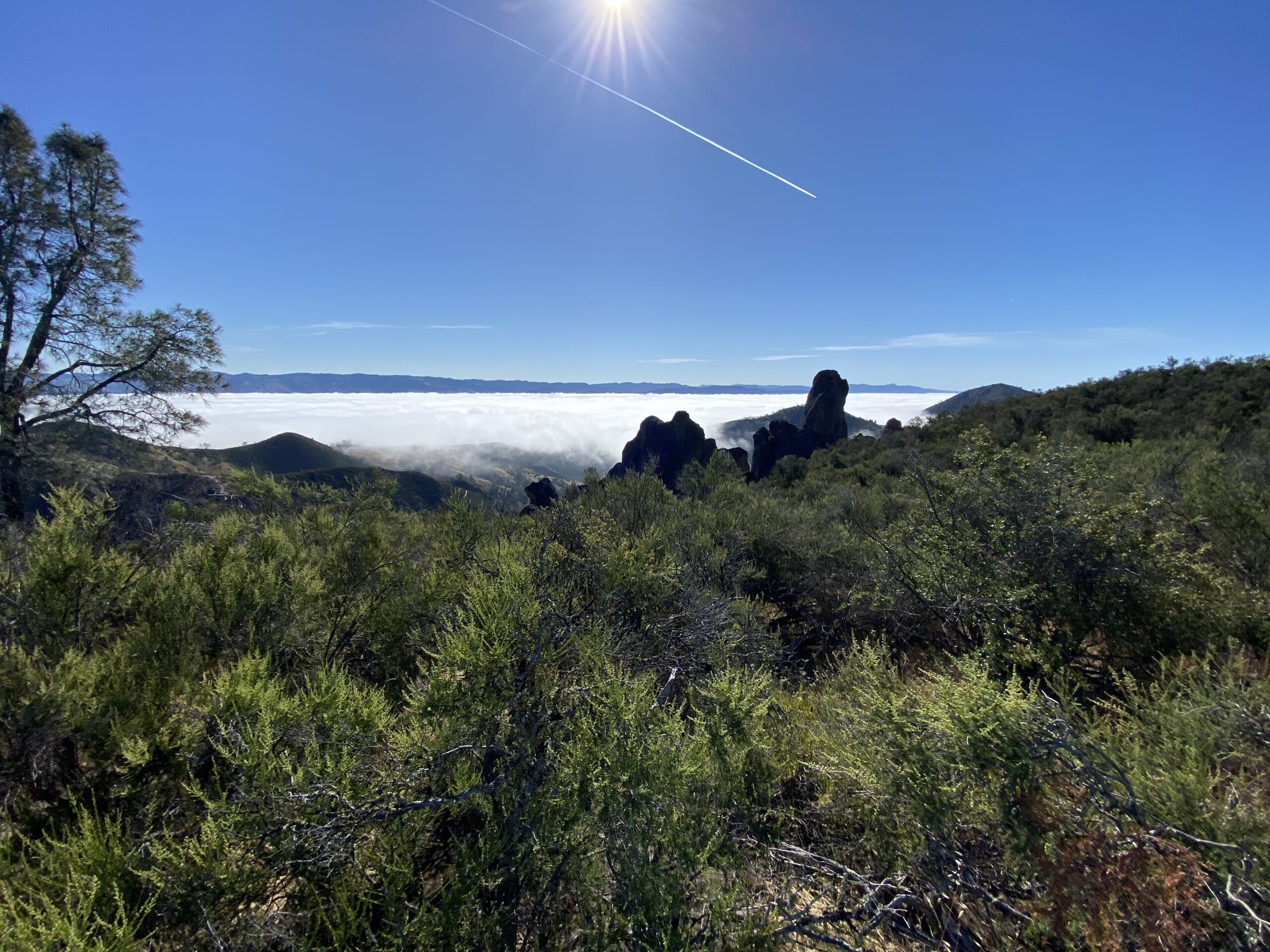On the boat back from the Channel Islands, we sat next to a woman who looked like a National Park gift shop had thrown up on her. She was wearing a Grand Teton hat and a Glacier National Park jacket, which she unzipped to reveal a Voyageurs National Park t-shirt. This was clearly a woman who had visited a lot of national parks so I thought I’d tap into her wealth of knowledge.
She listed a few of her favorite national parks before pronouncing that Pinnacles National Park was a disappointment. As that was our next destination, I bit my lip and kept quiet.
I hadn’t even heard of Pinnacles until a few years ago. It’s one of the newest national parks, entering the NPS system in 2013. It has no towering peaks or deep canyons. There are no herds of large mammals or life-threatening reptiles.
But my god, this park was anything but a disappointment. It’s primarily a hiking park, and the trails are fun and exhilarating, with gorgeous views and plenty of Kodak moments.

That’s not to say we didn’t have our challenges. Even before we arrived we received an email from the park telling us the campground roads would be repaved while we were there. And sure enough, we had to wait a good 15 to 20 minutes at the entrance of the park due to the construction work.
Nobody could really tell us what roads would be open and whether we could get to the trailheads we wanted to visit the following day. The only useful information was that paving would start around 8 a.m., so getting out of the campground early would be helpful.
Pinnacles has two entrances, one on each side of the park, and there’s no way to drive from one side of the park to the other. To get from the east side, where we were camping, to the west side, we’d have to exit the park and drive about 90 minutes around to the other side.

Our first morning, I got out just before the 8 a.m. deadline, and drove to the Moses Spring Parking Area where I picked up the High Peaks Trail. The trail climbs quickly to the upper reaches of the park, where the namesake pinnacles dot the landscape.
On this morning, the trail climbed above the clouds and the views of the rocks and cliffs poking up through the low-lying fog were nothing but spectacular. I tend not to take a lot of photos while I’m hiking, but I found myself stopping to take photos repeatedly.

The trail is fun as well, with some sections consisting of steps carved into the rock. The park service has put up railings along the sections of the trail with steep drop-offs where a fall could have consequences.
The High Peaks trail connects to the Condor Gulch Trail to create a loop of about six miles. Condor Gulch, as the name implies, is a good place to see California Condors. But I didn’t see any that morning.
When I returned to the parking lot, I had to wait for an escort car to lead me back toward the campground. The construction crews were turning cars around at the entrance, as half of the parking lot spaces were closed for repaving and the other spots were full. There would be no second hike that afternoon.

The next days, Mrs. 123 and I drove back out to Moses Spring to hike the Bear Gulch Cave Trail. There are at least two spots in Pinnacles where boulders have fallen into a narrowing canyon and were wedged in place, creating a tunnel or cave that you can hike through. Unfortunately, these caves are also prime nesting areas for bats, and the park services closes access to the caves when nesting is in progress.
We had heard the Bear Gulch Cave Trail was open the previous day, but when we arrived at the tunnel, we ran into a locked metal gate. There was a bypass trail that allowed us to hike around the tunnel and still make it to Bear Gulch reservoir. The reservoir is apparently home to the California Red-legged Frog. The species was once common there but disappeared in the early 80s, due to an infestation of Black Bullhead Catfish, likely placed there by someone who wanted to fish the reservoir. In 1985, park staff drained the reservoir and removed all the catfish. Although healthy populations of red-legged frogs existed in streams within a few miles of the reservoir, they couldn’t cross the obstacles like roads and buildings to repopulate the reservoir.

By the late 90s, the numbers of frogs in the streams was declining as early-spring floods were washing away their eggs, and tadpoles were being preyed upon by invasive Green Sunfish.
The park service used electro-shocking to remove the Sunfish in the 90s, and over time, red-legged frogs made their way back to the reservoir where their eggs would be protected from seasonal flooding. The park service then moved eggs from nearby streams into the reservoir allowing the population there to thrive once again.
We didn’t see any frogs and later learned the park recommends bringing binoculars if you want to spot any red legs.
We had wanted to explore the western side of the park as well, but the roads there were completely closed due to the repaving project. Even our limited glimpse of the park left us intrigued and we will definitely return to see the parts we missed.
Days: 129
Miles Traveled: 15.723
Next stop: Alcatraz


